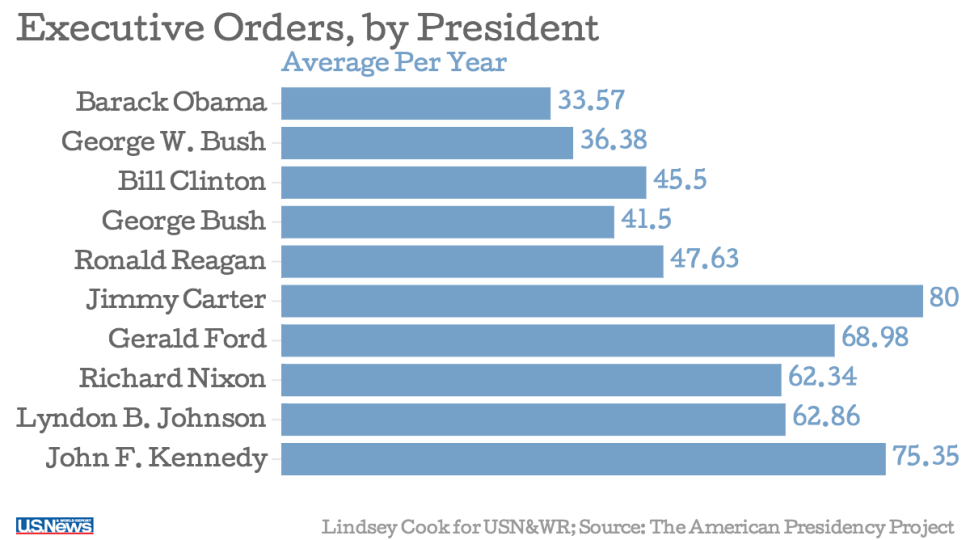There has been a lot of discussion about the use — and abuse — of the executive order as a means of circumventing the legislative process. Once President-Elect Trump is sworn in, what executive orders will he rescind and how will the Trump administration use this powerful tool? What policies will be affected? How will this impact you?
Here’s a refresher on the differences between an executive order and executive action and how both can affect policy.
What’s an Executive Order?
An executive order is an “official document the President of the United States creates to establish policies and manage the operations of the federal government. Executive orders are like laws, and can be reversed by the courts and Congress.”
Executive orders are assigned a number and published in the Federal Register. Here’s the list of Obama’s executive orders on Whitehouse.gov.
Executive action is “a broader term that can include not just Executive orders, but also Presidential memorandums, proclamations, and proposals.” These other executive actions do not carry legal weight but allow the President to “let Congress, the heads of federal agencies, and the public know what he thinks about events and issues that are important to him.”
Obama’s Use of Executive Orders
Some of Obama’s most controversial executive actions were on immigration, including his executive order on the Deferred Action for Childhood Arrivals (DAPA) program (which was blocked by the Supreme Court in the summer of 2016). (Click here for The Policy Circle brief on Immigration.) Obama also created a number of executive orders on gun control. For more details on how Obama used this tool compared to other presidents, see the National Constitution Center’s article, “President Obama’s Use of Executive Orders in Historical Terms.”
What Will President Trump Do?
At a speech in Gettysburg, Pennsylvania, during the campaign, Trump promised to “cancel every unconstitutional executive action, memorandum, and order issued by President Obama.” (Here’s Trump’s 100 day plan).
Yet Trump has talked about using executive action to reduce business regulations, reverse Obama’s immigration policies, and repeal Obamacare. Is this likely to really happen? How easy is that to do?
This CNN analysis explains, “Trump could issue a blanket order that rolls back every executive order Obama signed on the first day of his presidency, if he wanted to. He could also order every agency to begin a process of replacing the rules of the previous administration.”
Additionally, he could “halt any rulemaking that has not been finalized. Formal regulations require a process before being put into place, and any that have yet to become final before the start of Trump’s term could be ordered halted. Trump could also make selective enforcement decisions, giving guidance to his agencies to not enforce rules on the books, such as environmental regulations.”
However, to revoke or change any rule that has been finalized requires an entirely new process. This process could take anywhere from a few months to years.
What do you think will happen? What policies would you like to see rescinded or changed?

Source: US News & World Report. What is in the executive order is also important to consider, not just volume. Many are perfunctory, having to do with government operations or simple matters. Some presidents, e.g. Obama and DAPA and the Title IX reinterpretation, attempt to change existing law.
It’s a movement!
Recommend a Circle Leader. Circles are starting in DC, in Wisconsin, Minnesota, Arizona, and New York where circles are sprouting.
Start a Circle in your neighborhood. Add value in your community by giving women the facts and the space to strengthen their understanding of the issues.
Invest in The Policy Circle. Together let’s build a network of women who want to assume their civic duties and understand the impact of policy in their lives.
The Policy Circle is a 501(c)3 that provides a fact-based, nonpartisan framework that inspires women living in the same community to connect, learn about and discuss public policies that impact their lives. Women across the nation are taking a leadership role in public policy dialogue on what human creativity can accomplish in a free market economy.
